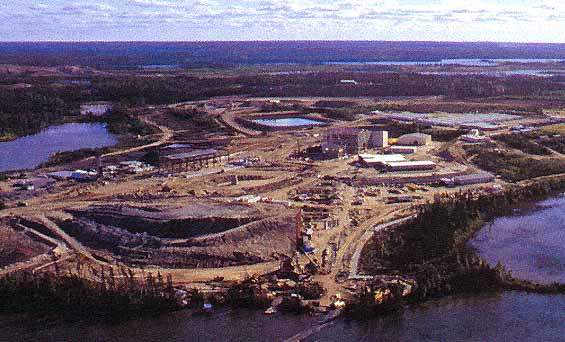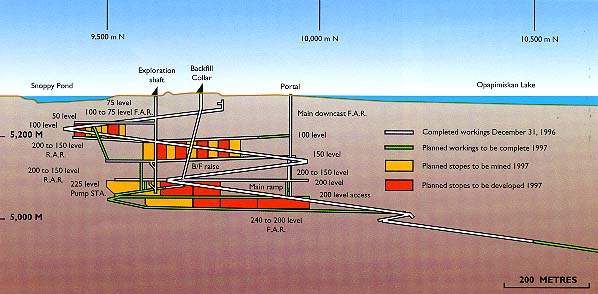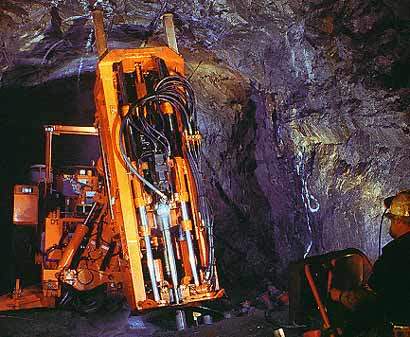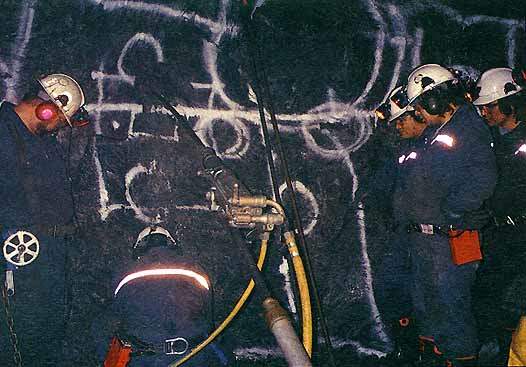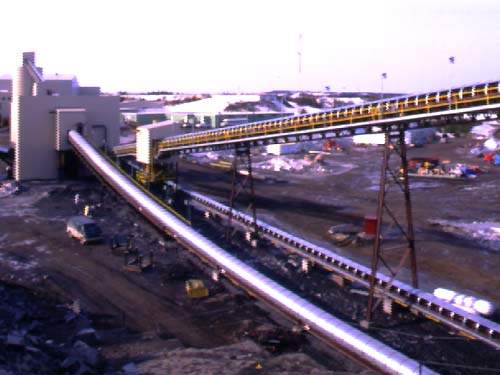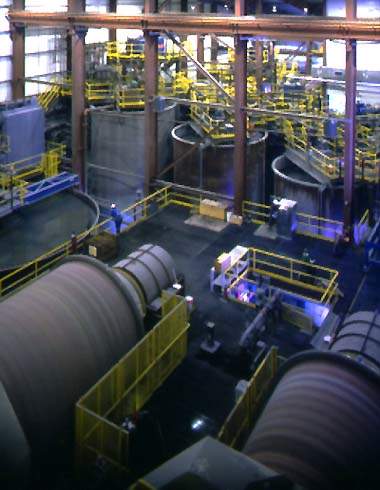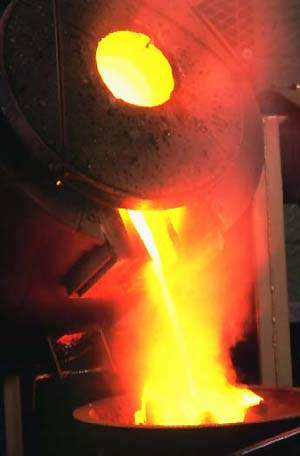Located 500km north of Thunder Bay in northwestern Ontario, Musselwhite was brought on stream in 1997 by a joint venture between Placer Dome and TVX Newmont Americas. Kinross Gold subsequently acquired a 31.9% holding in the mine with the amalgamation in 2003 of Kinross, TVX Gold and Echo Bay Mines, while Goldcorp Inc. bought Placer Dome’s 68.1% stake from Barrick Gold Corp. in 2006 following Barrick’s take-over of Placer. Thus ownership is held jointly by Goldcorp and Kinross.
GEOLOGY AND RESERVES
Musselwhite’s gold-bearing zones lie within the Weagamow-North Caribou greenstone belt of the Sachigo sub-province. The supracrustal rocks have been folded and gold mineralisation is generally found within iron formation horizons characterised by oxide-silicate facies.
As of December 2005, proven and probable ore reserves were 11.1Mt grading 5.67g/t gold, containing 2Moz of gold, with measured and indicated mineralisation containing a further 425,000oz. The current mine life is until 2013, with exploration continuing in an effort to identify further resources.
MINING
Musselwhite initially operated both open-pit and underground mines, open-pit production having been designed to ensure mill feed at a rate of 3,300t/d for about five years following mill commissioning. Most of the mine’s ore is now sourced from underground.
In 1997, Phase 1 underground production from the T Antiform (T-A) deposit built up to a design rate of 2,700 t/d, supplemented by ore, at a rate of 1,000 t/d, from the PQ zone. The T-A rate was increased to 3,300 t/d by expanding the fleet of 40-tonne haul trucks.
The first phase of development of the underground section of the T Antiform deposit involved developing a decline from surface to access some 5Mt of ore reserves above the 275m level. Other infrastructure included a ventilation raise to surface.
During Phase Two, the reserves were accessed via a production shaft, achieving a mining rate of 3,500t/d. A new ventilation shaft was sunk and the existing ventilation shaft converted into a production shaft, with a crushing level, loading level and ore passes installed. An underground crushing and conveying system was subsequently commissioned, increasing production to 4,000t/d.
Underground production is from transverse longhole stopes where the mining width is greater than 12m, the ore being blasted using ring drilling. Cemented rockfill is used in primary stoping blocks and uncemented rockfill in secondary stopes. Longitudinal stopes use conventional longhole benching and are backfilled with waste rock and crushed material from open-pit stripping. Ore handling underground is undertaken by remote-controlled LHDs, with 40t-capacity trucks used to haul the ore to surface.
ORE PROCESSING
The mill is designed to treat 3300t/d and employs conventional gravity separation, cyanide leach and carbon-in-pulp (CIP) processes to recover the gold from the ore.
Primary crushing is carried out on surface using a jaw crusher, the output being fed directly to a secondary crushing plant. Gravity concentration using a Knelson concentrator and shaking tables recovers coarse free gold from the ore, with the remainder being leached for 32 hours in agitated tanks.
Gold in solution is recovered by absorption onto activated carbon in a CIP circuit. Loaded carbon is eluted using the conventional pressurized Zadra technique. Gold in the pregnant solution is recovered onto stainless steel cathodes by electrowinning. The gold sludge is pressure-washed from these cathodes, filtered, dried, and melted into bullion bars. Stripped carbon is reactivated and returned to the CIP circuit. The gold in the gravity concentrate is recovered by direct smelting.
The CIP tailing flows by gravity to a two-stage CCD washing circuit to recover cyanide. The washed tailing is pumped to a reaction vessel for cyanide destruction. The Inco/S02 air process with two stages of washing is used in order to provide an effluent containing less than 5ppm cyanide for discharge to the tailings pond.
PRODUCTION
During 2005, Musselwhite produced just over 1Mt of ore grading 5.44g/t gold. Gold production totalled 250,380oz at a cash cost of US$324/oz. Since being commissioned, the mine has produced over 1.7Moz of gold.

